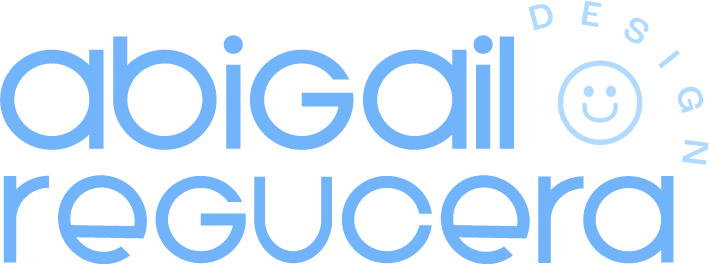Q & YAY: Questions To Help You Plan Your Website
Building a website can be overwhelming and slow-moving if you don’t have a plan in place. It’s so easy to want every appealing template and widget for your website.
There’s nothing wrong in having a sleek, well-designed site, but simply creating a website without a self-written prescription can conflict with your business goals.
Even a minimalistic website has a lot of work invested in it. Someone actually spent a lot of time thinking about how it should look, feel, and work, before they started building it.
So I’m asking you some questions to help come up with a plan that works exclusively for you. It may seem like a web of questions, but don’t worry, there are no wrong answers, just your own unique answers.
Haven’t Jumped On The Brandwagon? DO IT NOW!
Branding is like your business’s mini-multiverse. Your brand does not begin and end with a logo coupled with great customer service, it’s so much more. For instance, the colours of your brand should relate to the industry you’re in—a bright flaming red wouldn’t work for a holistic practitioner’s business because it denotes active excitement and energy, the kind fast food restaurants want to elicit (how many fast food restaurants can you think of with red in their logo?)
Your brand is the mood or emotion that customers feel when they think of your company. This is carved into so many tiny details, online and offline, from the font style of your business name to the way your email signature is designed.
There are many items that carry your brand identity apart from the website—stationery, packaging, presentation decks, brochures, e-receipts, and much more. If you haven’t thought about those aspects, you need to. They have to come together as a cohesive branding unit, along with your website. If you publish your website before cementing the overall design, everything else will have to follow the aesthetic that your website sets.
What’s In a Domain Name?
Christening your website can have many steps to it. First, you need to ascertain that there is no other website with the same name that already exists. You can check the availability of your domain on Squarespace’s Domain Name Search. You’ve triple-checked that there isn’t any other domain? Great! But you’re not in the clear just yet. How unique is your website URL though—are there similar-sounding URLs out there? Can it be easily remembered, pronounced and spelt?
Will your business’s social media platforms have the same name, are they available or already taken? Are you sure you will never want to change the name of your website? If you do change the name after some time, it will cost you more than just money, but also the brand reputation that you spent years building!
Which Platform Are You Choosing?
Websites don’t just manifest from some code and links put together. They need to have a foundation on a platform. You could choose a particular platform today, but later on, when you upscale your business and want to add more elements to your website like say an online store or a blog, the platform must have the capability to host it. And if you hadn’t realized by now, not all web-hosting platforms were created equal. Being able to customize a website is crucial, and that’s why I vouch for Squarespace.
What Will Your Website Do?
Given how 2020 panned out, the importance of a website is not lost on anyone who owns a business. Since every other entrepreneur in your network has a website, you know you need one too. But what should it do? ‘Why, sell, of course, silly’ is probably your answer on reading that question.
No, but really what should your website do if it’s moulded around how your business operates?
If you’re a small business owner who sells products from a physical store only, how would you make your website memorable so that the website visitor makes a strong move to visit your physical store?
If you do want to sell your products online, do you have a secure payment gateway that can be effortlessly tied to the website? Will the checkout process be seamless and not have the visitor throwing up their hands (and credit card) in frustration?
If you want more leads to grow an email list, how will you get people to leave behind their email when they visit your website?
If your website is going to a pool of information based on a certain field, how would you make sure it reaches a wide audience? It’s important to understand the consumer buying journey from the time they land on your website!
What’s Your Strategy?
Okay, so now that you know what you want your website to do, how do you make it a magnet for your dream clients? Your content and layout design need to complement each other—imagine reading a lawyer’s website and coming across some cheekily-worded copy. You wouldn’t take them seriously after that. Or what if behind an aesthetically-pleasing homepage is a contact page with jarringly bright colours? Fixing on a clear-cut strategy is vital to your website’s purpose—it’s a firm guideline that keeps you from giving into every whim and idea just because it works or looks good. With a strategy in place, you can reach your business goals and speak to your target audience and dream clients.
From my experience, I’ve noticed that when website strategies don’t have the following components, it can be far from effective:
NO CLEAR CALL TO ACTION
The client has gone through your website and really wants to buy your service or product. But there is that ‘Know More’ or ‘Contact Us’ button, or at least not any easily visible one.
NO CLEAR IDEA OF WHAT YOU DO
This needs to be answered in a matter of seconds after the visitor opens your website. What is your business? And what does it do for your customers? Answering these questions as early as possible can filter out prospective leads from everyone who comes across your website.
WORDY HEADERS
Yes, I get it, there is so much you want to tell a client to convince them to work with you. But use too many words, and you could have them dropping off.
Well, hopefully now that you have more answers than questions, you have a clearer idea of setting up your website.
Now for the final question: do you need help? Determine where your strengths lie in the grander scheme of setting up your website, and if they’re not in coding or web design, you might want to outsource the required help.
If you still think you need some more clarity on planning your website, download my checklist to help you help yourself.






